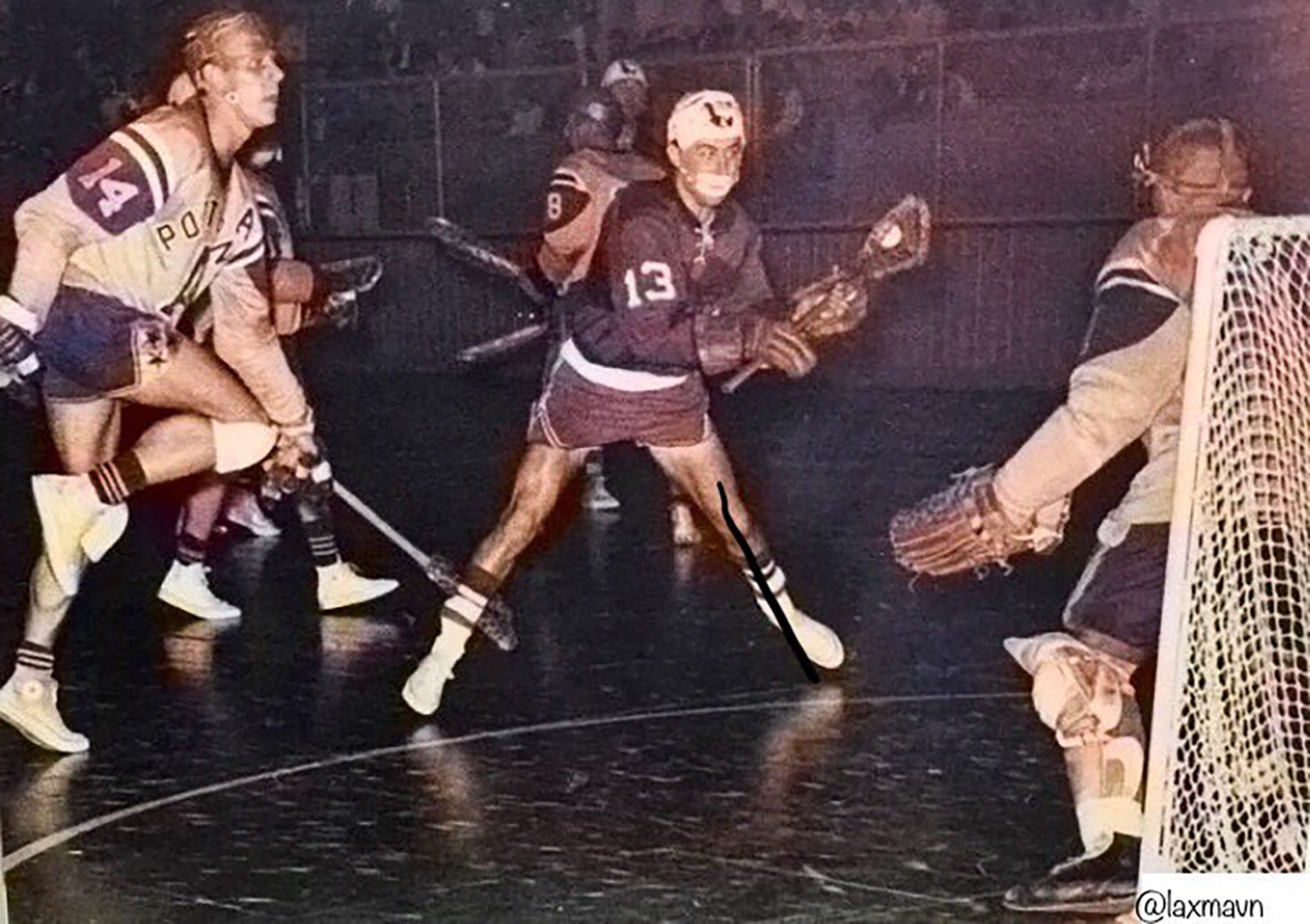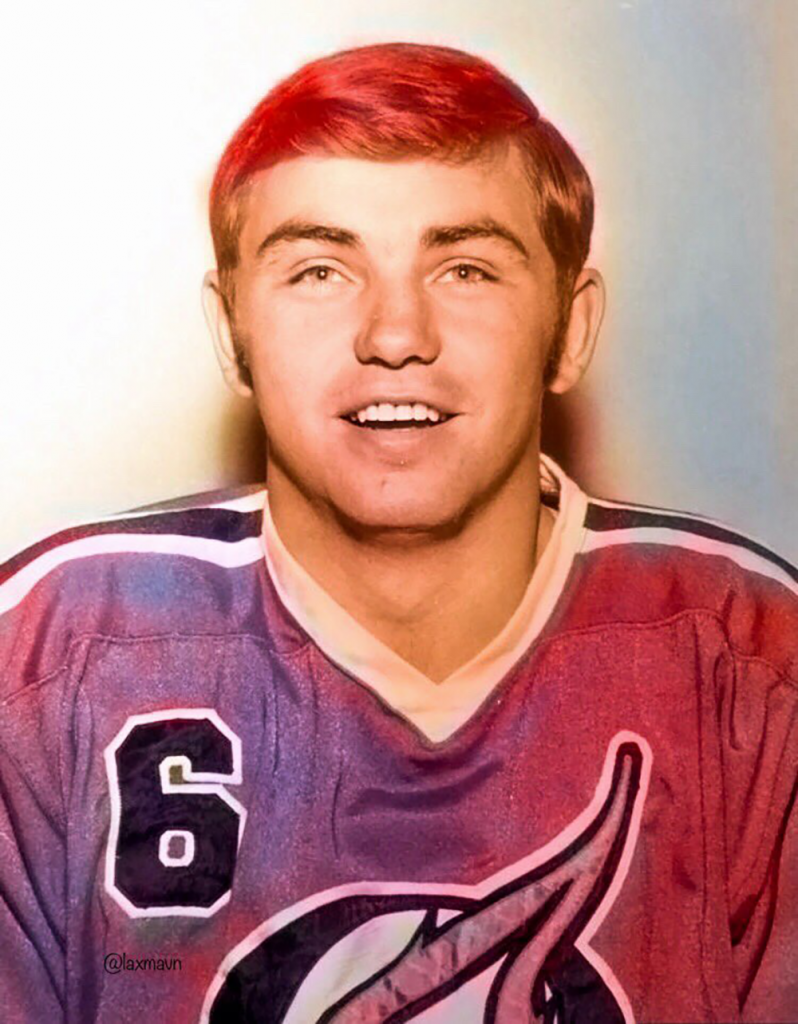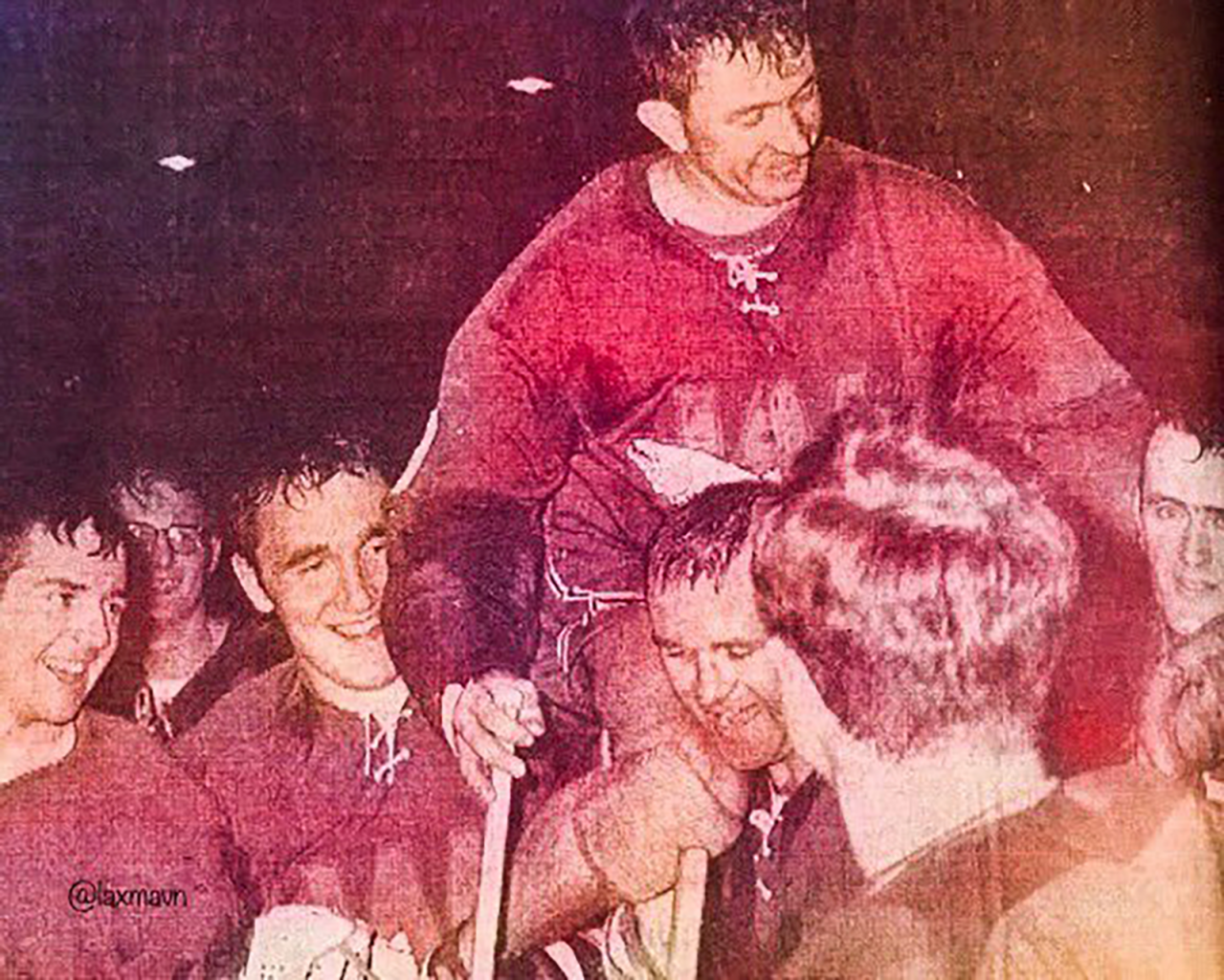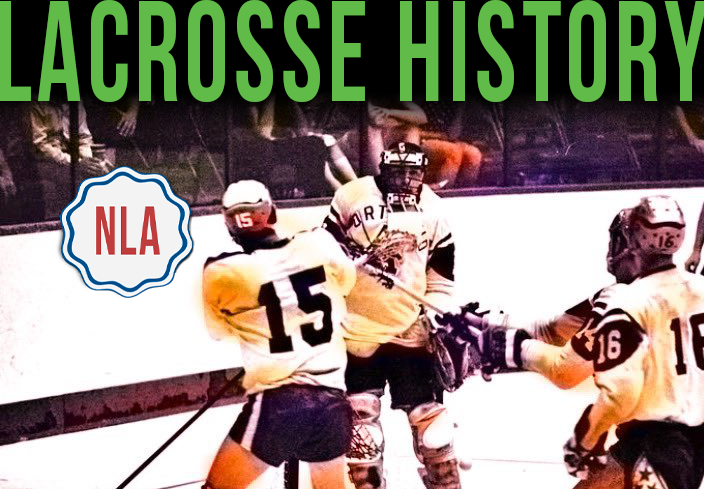Steve Holroyd of CrosseCheck.com delves into the National Lacrosse Association of 1968 as part of Pro Lacrosse Talk’s “Lacrosse History” series.
In 1959, the world of professional sports was pretty easy to navigate.
Major League Baseball had 16 teams—equal numbers in the National and American Leagues—and, but for some recent franchise shifts, the same teams since 1903. For almost a century, professional baseball had been the “National Pastime” in the United States.
The National Football League was a cozy little 12-team league, with pro football still very much a second cousin to the college game…although the exciting 1958 Championship Game was the first step towards changing that.
The National Basketball Association was an eight-team league, but was far from a stable or vibrant organization.
And the National Hockey League was made up of the so-called “Original Six.”
In sum, 42 professional teams in four major leagues.
Within ten years, everything changed.
The Pro Sports Explosion

The NFL had to contend with a rival league. In 1960, the American Football League began play with eight teams. Initially an itch that barely needed scratching, the AFL served to officially kick off the pro sports explosion in 1964, when it inked a $36 million dollar television contract with NBC. Pro sports were now a lucrative business, and the NFL and AFL further expanded before finally merging in 1970, with 26 teams in the fold.
The NBA also expanded throughout the 1960s as it sought to also earn some of that sweet television income. By 1968, the league had expanded to 14 teams. By then however, it also had to deal with a rival league, as the American Basketball Association debuted in 1967 with 11 teams.
Also seeking TV money, and mindful of the possibility of a rival league of its own, the NHL doubled in size in 1967, and added two more teams in 1969.
Even baseball got into the act. Heading off the possibility of a third major league for the first time since 1915, MLB added two American League teams in 1961, and two National League teams in 1962, killing the Continental League in its cradle. In 1969, four more teams were added.
In ten short years, the four major professional sports had found their ranks swell…and all driven by the lure of television money.
Since there were only four pro sports, other folks got more creative. In 1967, the first major professional soccer leagues in almost forty years began play. Tennis finally embraced professionalism, and the Open Era began in 1969. In sum: a literal professional sports explosion in the United States and Canada.
And lacrosse was not lost in the shuffle…
The Emergence of Professional Box Lacrosse

In 1968, the National Lacrosse Association began play. With it, box lacrosse had its first truly international, major league—and the first to actually survive long enough to crown a champion. Notwithstanding the failures of the 1930s (American Box Lacrosse League, North America Professional Lacrosse Association and Pacific Coast Lacrosse Association), the movers and shaker behind the NLA decided that the time was right for professional box lacrosse, and got to work setting up a circuit.
And, consistent with the times, it was mostly about television money.
Morley Kells, an advertising executive with some hockey accounts, started the Toronto Maple Leafs Senior Amateur box lacrosse team in 1966. In short order, he had dreams of a professional box lacrosse circuit. To that end, he scheduled a game against the Oshawa Green Gaels (playing as “Detroit Hornets”), and invited some NHL executives to the match.
The exhibition that convinced NHL owners from Detroit and Toronto to invest in pro boxla—and the National Lacrosse Assocation was born pic.twitter.com/kAKWdvg9XX
— Steve Holroyd (@laxmavn) November 1, 2019
Bruce Norris, owner of the Detroit Red Wings, attended the game and liked what he saw. He told Kells he was in if there was a pro boxla league, but only if the other American NHL cities (of which there were four at the time) would join in. Owners from the Boston Bruins and Chicago Black Hawks had some interest but would not commit, and the New York Rangers declined, as the new Madison Square Garden was in the middle of being built. Norris then agreed that, if the two Canadian NHL teams would at least join the league, he would enter a Detroit team.
Kells convinced the owners of the NHL Maple Leafs (Harold Ballard and Stanford Smythe) to back the lacrosse Leafs as a professional franchise, and broadcaster Brian MacFarlane acquired a Montreal franchise—largely because he was the only one interested in that city, as Molson Breweries (owners of the NHL Canadiens) demurred. Joining the NHL cities was the Peterborough Lakers—a professionalization of the long-running Peterborough Petes club.
Forming the National Lacrosse Association

In January 1968, the formation of the National Lacrosse Association was announced. The league would be made up of ten teams, with six based in Canada.
The choice of name for the league was odd, as another National Lacrosse Association had been around since 1887; as the team names would indicate, though, issues of trademark infringement were not as big a deal in the late 1960s.
Recognizing that this was essentially a regional circuit, not likely to attract interest from television, Kells began to consider new franchises from the west coast.
This did not sit well with a number of well-established western Canadian powerhouses. Thus, by late February, reports began to surface of the long-standing Inter-City Lacrosse League professionalizing and featuring the Vancouver Carlings, New Westminster Salmonbellies, Victoria Shamrocks, and Coquitlam Adanacs. Shortly thereafter—perhaps to directly challenge Kells’ proposed league—it was announced Coquitlam would play in Portland.
Fortunately, both leagues saw what a disaster having two competing leagues in a new sport had been for pro soccer in 1967. Thus, both the ICLL and the NLA managed to come to an agreement. Ultimately, there were no teams in Seattle, Rochester, or Ottawa, but all of the other named teams would feature in the new league. The National Lacrosse Association was up and running.
| National Lacrosse Association Franchises |
|---|
| Detroit Olympics |
| Montreal Canadiens |
| New Westminster Salmonbellies |
| Peterborough Lakers |
| Portland Adanacs |
| Toronto Maple Leafs |
| Vancouver Carlings |
| Victoria Shamrocks |
While the 1960s may have been a boom for pro sports, not everyone was happy to see box lacrosse enter the fray. “Purists mouth the word ‘professional’ with the sort of distaste usually reserved for ‘purse snatcher’ and ‘kidnapper.’ Their feeling seems to be that the rape of lacrosse is imminent, spoiling it once and for all for the innocent and pure of heart,” wrote International Lacrosse Magazine, but not without adding, “Professionalism never spoiled anything that didn’t have one foot in the grave to begin with. And lacrosse has never been healthier.”
Although a new league, all of the teams but Montreal and Detroit had existing rosters. Nevertheless, a fully professional league would require an upgrade in talent, and the ICLL in the west and Ontario Lacrosse Association in the east found their remaining rosters raided for talent.
A draft was held to stock NLA rosters, with the existing teams protecting all players signed from 1967, two over-age juniors and two juniors from their own junior clubs. Detroit was coached by Jim Bishop, founder of the Oshawa Green Gaels—1967 Minto Cup champions, and winners of five in a row. Not surprisingly, Bishop loaded his roster with Green Gaels players.
Even with established rosters, there was some player movement on the west coast. The Coquitlam Adanacs relocated to Portland (oddly retaining the “Adanacs” name—“Canada” spelled backwards), and needed to energize a fan base that was new to box lacrosse. To that end, the team signed lacrosse legend Jack Bionda—who was also well-known to Rose City natives as a star of the Portland Buckaroos hockey team. Portland also added Tom McVie, another Buckaroos veteran.
Portland was not the only team that wanted to have hockey players who would be popular with fans on the roster. The Victoria Shamrocks announced that Barry Ashbee, a Boston Bruins defenseman before missing the entire 1966-67 season due to back surgery and subsequently being exiled to the Hershey Bears, had signed with the team, but Ashbee later demurred. Two other Boston stars—Gerry Cheevers and Ken Hodge—also wanted to play (for Toronto), but the Bruins would not give permission. John Ferguson wanted to play for Montreal, but was also denied permission—he would instead coach the lacrosse Canadiens. However, the Philadelphia Flyers agreed to let Doug Favell play with Detroit. In addition, a number of minor league hockey players would also dot NLA rosters, including future World Hockey Association stars Paul Shmyr, Jan Popiel, and Rick Dudley.
Favell’s presence gave the NLA at least one hockey player with whom the casual lacrosse fan would be acquainted. Favell had just come off a stellar rookie season, going 15-15-6 for the expansion Flyers, with a .931 save percentage; he and netminding partner Bernie Parent led the running for the Vezina Trophy for most of the season, and Favell’s 2.27 goals against average was good for 3rd best in the NHL that year. Favell finished in 3rd in Calder Trophy voting, behind winner Derek Sanderson and Jacques Lemaire.
While a goalie in hockey, Favell was also a stud forward in box lacrosse. The son of a Canadian lacrosse hall-of-famer, the junior Favell was a star in the junior league with St. Kitts, scoring 49 goals in 1965 and 53 more in 1966, both in 16-game seasons. His talent was not forgotten, and Bishop drafted him for the Olympics’ 1968 season.
Ticket prices would average about $2-$3 per game. Kells said the NLA needed to draw about 3,000 per game to break even, a reasonable goal as operating costs for teams was in the $50,000 to $100,000 range; Salmonbellies President Dave McDonald estimated the cost of operating the franchise at about $40,000, with half going to player salaries (at $1,000 for the season), while MacFarlane envisioned the Canadiens spending in the $50,000 to $100,000 range. Toronto predicted expenses in the $85,000 range, although Maple Leafs executive Jim Webb also said he expected teams would also find jobs for players to help them make ends meet during the season. Ultimately, salaries would be in the $3,000 to $4,000 a year range—but with only 38 games in a season, all the players could hold jobs without interfering with games or practices.
Kells also said Toronto had a local TV contract with a Hamilton station, but that a national television contract was the goal. “TV exposure will glamorize the sport, not only on the professional level,” Kells said. “Big men are behind this sport—men who don’t lose money in the long haul.”
While the eastern teams may have included owners with significant resources, the ICLL teams were not as well-heeled. As the western teams were only part-time professionals, those teams (Portland, Vancouver, Victoria, and New Westminster) agreed to a profit-sharing arrangement to aid sustainability. “You could call it a mild form of socialism,” said Western Division commissioner Tom English.
Some rule changes were in the offing, as well. In order to speed up the action, a 45-second shot clock was instituted. There would be no tie games; games even at the end of regulation would proceed to a 10-minute overtime, followed by sudden-death if needed. Zone defenses were outlawed, except in shorthanded situations, and the free throw was replaced with a penalty shot.
After months of planning, acquiring players, and setting the stage, the NLA began its season on Sunday, May 5, 1968, with Detroit Olympics hosting the Toronto Maple Leafs. Sports celebrities like Gordie Howe, civic leaders, and members of city and state governments were among the 3,000 fans on hand at 7:00 p.m. to watch the Detroit Olympics (and Red Wings) owner Bruce Norris officiate the opening face off.
Both teams were tied at 3 after the first 20-minute period, but Detroit went up 8-6 after two periods before holding on to win, 10-8. Eight different Maple Leafs scored for the visitors. Leading the way for the Olympics was Doug Favell, with two goals.

Details concerning the game were scarce in game reports, with only Favell getting mentioned. This was no accident, as Favell was exactly the kind of breakout player the new league was counting on. While boxla was well-established in Canada, it was virtually unknown in the United States. Hockey was a little better known in America—especially with the NHL’s having doubled in size the previous season—and hockey players were known to the U.S. public. While Favell himself had only just finished his rookie season in the NHL, it was a spectacular one, so he was popular among hockey fans. It also helped that he could lax a bit—himself the son of a Hall of Fame lacrosse goalie, the younger Favell had been a dominant forward with St. Kitts the previous two lacrosse seasons. Yes, the NLA was hoping Favell would be one of the faces of the league.
On June 1, however, Favell delivered some bad news: his last game with the team would be the following night. Favell’s NHL team—the Philadelphia Flyers—had been the only hockey side to allow one of its players to participate in the NLA. However, Flyers general manager Bud Poule was prompted to change his mind when other members of the hockey team requested permission to sign up with baseball and lacrosse teams in the offseason. Poile’s decision was also likely influenced by the fact that he had announced that one of his two young goaltenders—Favell and Bernie Parent—could be available in return for a high-scoring forward. Whatever the reason, this much was clear: Favell’s NLA season was over. “I really enjoy lacrosse,” said Favell, whose 13 goals and 6 assists in 8 games placed him at fifth place on the leading scorers table, “but my future is in hockey and I can’t jeopardize my career.”
While the NLA had lost its most visible player in less than a month, a number of other stars had emerged to take his place, all of whom would become legends in the lacrosse community, and would feature in the National Lacrosse League of the mid-1970s. Favell’s Detroit teammates had included Gaylord Powless, Ross Jones, Merv Marshall, Larry Lloyd, and Jim Hinkson—the latter of whom would eventually author several seminal books on box lacrosse tactics. Toronto Maple Leafs featured Graeme Gair and Ron MacNeil at forward, as well as a young Paul Suggate; Peterborough Lakers had Johnny Davis, Cy Coombes, and goalie Pat Baker; Montreal Canadiens had defenders Ken Crawford and Wayne Thompson, goalie Bob McCready, Montreal native Michel Blanchard, and a very young Rick Dudley. In the west, other stars had emerged: Mike Gates, Bill Bradley and John Allen (Portland); Wayne Shuttleworth, Wayne Goss, Al Lewthwaite and Paul Parnell (New Westminster); and Ranjit Dillon (Victoria); Peter Black, Bob Salt, and goalie Skip Chapman (Vancouver).

With these stars, and an exciting product on the floor, the league was initially very optimistic about the future.
Still, problems quickly arose. By June 17, Montreal owner Brian MacFarlane announced that with travel costs alone running at about $30,000, and salaries in the $1,300 to $3,500 range, it was pretty clear that the boxla Canadiens were going too far exceed its $100,000 budget for the year; ultimately, after initial taking a pass, Molson was persuaded by Detroit and Toronto (both owned by the NHL teams in those cities) to take the franchise off the broadcaster’s hands. Even then, though, the team never played in the storied Montreal Forum, instead playing most games at Paul Sauvé Arena, a site better known for hosting pro wrestling matches.
Still, MacFarlane remained optimistic:
We took a pro outlook all the way and are prepared to lose money this year. Montreal has a few different problems than the other clubs but none that can’t be solved…We’re looking ahead to a few more years when the sport will be played in most of the NHL cities with TV revenue to boot. When and if that happens, there’s no telling what lacrosse players will be worth.
The corralling of Molsons into the league was symptomatic of the NLA’s ultimate goal: to basically market itself as a “summer NHL.” At the time, it was still expected New York—essential to any pro league’s being viewed as “major”—would join the league in 1969, with the new Madison Square Garden fully completed, and other cities like Philadelphia and Chicago were rumored to also be ready to join.
MacFarlane also revealed the league’s other great hope: that television would show an interest in the game, and infuse the NLA with cash. Alas, the hoped-for television deals never came. As a result, the circuit was forced to survive on ticket revenues almost exclusively.
Unfortunately, the NLA fell short of the 3,000 per game “break even” point suggested by Kells at the beginning of the season, with the league averaging only about 2,100 per match. The highest crowd of the season was 7,153 fans in Maple Leaf Gardens on August 7; the lowest was 556 on September 6 in Vancouver’s 16,000 seat Pacific Coliseum. Toronto led the NLA in attendance with a 4,200 average, which was all the more remarkable in that the Gardens were not air conditioned; as a rule, the Toronto crowds were short of what ownership had hoped for because fans did not have the stomach to sit inside a sweltering building as spring turned to summer. Despite the up-tempo, full-press style of Jim Bishop giving Detroit the most entertaining team in the league, his team only drew 3,000 a game to the old Olympia. The league’s other major hockey market—Montreal—averaged an anemic 1,500.

Also problematic was the fact that newspaper coverage—particularly in the larger markets—was non-existent. While the Montreal Gazette continued to give full coverage to the Lax Habs, the dominant, first place Detroit Olympics received virtually no coverage in local papers, and the Toronto Maple Leafs suffered from a similar lack of interest in the media.
Which was unfortunate, because the NLA was providing some exciting play. In the east, Detroit easily won the division, with a 24-14 record, while the west found the Portland Adanacs posting an identical record. Portland’s first major sports team (predating the NBA’s Trail Blazers by two years) drew a fair amount of attention in the Rose City papers, but the novelty of box lacrosse did not translate to the gate, as the team only averaged 1,900 per game.
The playoffs would find Detroit sweeping Peterborough—made up of players who would provide the core of the Philadelphia Wings in the National Lacrosse League six years later—in the semifinals, while New Westminster upset Portland in the western semifinals, 4 games to 2. The Salmonbellies continued their improbable run, besting the heavily-favored Olympics in the finals, 4 games to 2.

Although by finishing its season the NLA had accomplished something that no other pro lacrosse league had done since 1931, it was far from healthy. Besides the lower-than-needed gate receipts, the costs of travel had proved to be prohibitively expensive. Further, the expected money from television never materialized. Nevertheless, the league planned to go forward into 1969 with all of its teams returning—although there was some talk Portland would move to Seattle—and be joined by new teams in Boston, New York, Philadelphia, and Rochester.
Things began to unravel in early 1969, however. In February, Montreal announced that it would not continue, primarily due to an inability to get suitable dates at the Montreal Forum. This move prompted Detroit to announce it was closing up shop two weeks later. With two major markets bailing on the league, the possibility of a television deal seemed more remote than ever; the interest expressed by Boston, Philadelphia, and New York quickly evaporated. Not willing to let his dream die, Kells convinced teams from St. Catherines and Kitchener to join the league, turning the Eastern Division into an all-Ontario circuit.
Suffice it to say, the western teams were not impressed. Ultimately, those teams announced that, while they would remain professional, they would operate in 1969 as the Western Lacrosse Association, with Portland returning to its original city of Coquitlam. Kells followed suit, announcing the former NLA East would operate as the Eastern Professional Lacrosse League. Both survived 1969, with the champion of the west (New Westminster) facing the eastern titlist (Peterborough) in a “world series” of sorts, with Peterborough winning. But television continued to ignore the game, and gate receipts were lower than the year before. As the sport entered the next decade, the professional experiment was abandoned, and it would be several years before another attempt at professional box lacrosse would emerge.
To read more about the National Lacrosse Association or other pro lacrosse leagues of the past, visit crossecheck.com.





I wanted to note: Ferguson never actually got to coach the lax Habs–permission was denied by the hockey team. The team went through a bunch of coaches in its one year–including boxla and hockey legend Bucko MacDonald, but Ferguson was not one of them.